Heading out the door? Read this article on the new Outside+ app available now on iOS devices for members! Download the app.
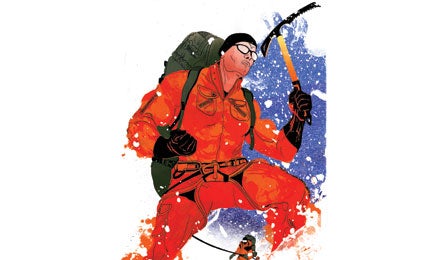
Are You Tough Enough? (Jacob Thomas)

Tough Job: Backcountry Ranger (Jacob Thomas)
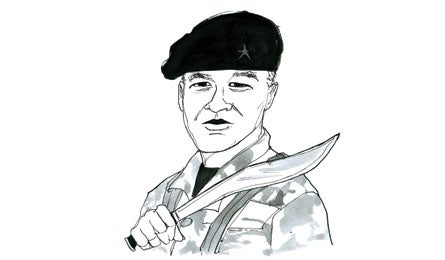
Tough Job: Gurkha Soldier (Jacob Thomas)
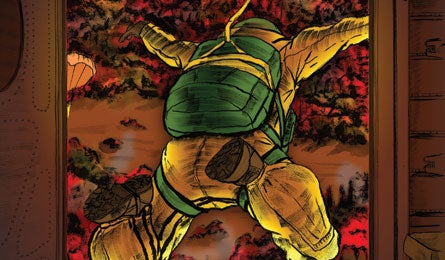
Tough Job: Smokejumper (Jacob Thomas)
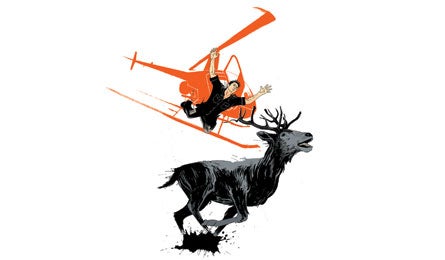
Tough Job: Wildlife Biologist (Jacob Thomas)

Tough Job: Outward Bound Instructor (Jacob Thomas)
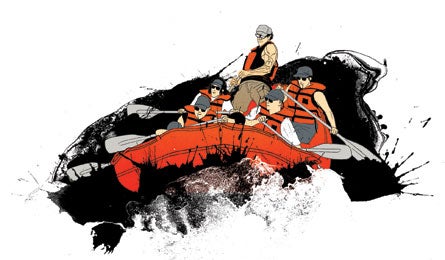
Tough Job: River raft guide. (Jacob Thomas)

Tough Job: Sherpa. (Jacob Thomas)
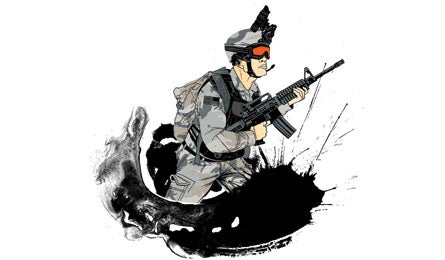
Tough Job: Navy Seal (Jacob Thomas)
Backcountry Ranger
Gurkha Soldier
Smokejumper
Wildlife Biologist
River Raft Guide
Outward Bound Instructor
Sherpa
Navy Seal
Backcountry Ranger | Gurkha Soldier |Smokejumper |Wildlife Biologist | River Raft Guide | Outward Bound Instructor | Sherpa | Navy Seal
BACKCOUNTRY RANGER
Job description Simply put, get paid to be a backpacker. OK, that’s too simple. Rangers do explore sprawling wilderness areas on foot, but it’s not all peakbagging and meadow naps. On patrol, you’ll check on visitors’ safety and lawfulness, perform trail maintenance, join search-and-rescue efforts, and more. (Get an insider’s take on the job at backpacker.com/ranger.) According to Patti Schwind, who worked six seasons as a wilderness ranger in Idaho, “You need superior strength and stamina for all hiking conditions. Rangers typically go on a 10-day hitch, alone, and hike up to 15 miles daily.”
Entrance exam A backcountry ranger carries a 65-pound pack full of heavy tools, such as an axe, shovel, pulaski, saw, and wrench. The following test is designed to gauge your ability to carry that pack and perform routine tasks. You can take a one-minute rest between exercises, but to pass, you must finish it all within three hours.
+ Walk 5 miles at a 5% incline on a treadmill with a 50-pound pack, in 90 minutes or less.
+ Dig a 10-foot-long trench that is 2 feet wide and 2 feet deep.
+ Push/roll a 30-pound boulder for 50 feet.
Backcountry Ranger | Gurkha Soldier |Smokejumper |Wildlife Biologist | River Raft Guide | Outward Bound Instructor | Sherpa | Navy Seal
GHURKHA SOLDIER
Job description Scare the bejesus out of your enemies. The original Gurkha regiment was established in 1815 by the British, after they’d declared war on Nepal but couldn’t defeat a band of fierce holdouts in Gorkha. Lesson: If you can’t beat ’em, recruit ’em. The Nepalese soldiers quickly developed a reputation for unmatched bravery and ruthlessness, fighting by the motto “Better to die than be a coward” while wielding an 18-inch curved blade, called a kukri, that “once drawn must taste blood.” During the Great Indian Mutiny of 1857, a mere rumor that the Gurkhas had joined the revolution in the Indian town of Simla sent enemy soldiers fleeing. In September of last year, a single Gurkha on leave in India took on a band of 40 train robbers—and won.
Entrance exam
+ Half-mile run in 2:45 or less and a 1.5-mile run in less than 9:40
+ 12 pull-ups (palms-toward-you grasp)
+ As many sit-ups as you can do in 2 minutes (70 minimum)
+ Hike a 3-mile course gaining 1,500 feet, while carrying 55 pounds of stone in a doko (a woven basket with a strap, or tump line, that rests on the forehead) in 48 minutes or less.
Backcountry Ranger | Gurkha Soldier |Smokejumper |Wildlife Biologist | River Raft Guide | Outward Bound Instructor | Sherpa | Navy Seal
SMOKEJUMPER
Job description Risk your life to fight wildfires in the most extreme conditions and locations imaginable. Smokejumpers up the danger by parachuting into remote backcountry hotspots. After leaping from the plane, you retrieve your gear (up to 110 pounds of supplies per person), dig fire lines or fell trees from dawn to dusk, and often hike out 10 miles after the job is done. Tip: Don’t get your chute caught in a 150-foot-tall ponderosa on the way down. Expect to take the following test on the first day of training.
Entrance exam
+ 1.5-mile run in 10:35 or less
+ Minimum of 7 pull-ups
+ 45 sit-ups in 1 minute
+ 25 push-ups in 1 minute
+ Dig 99 feet of 3-foot-wide fire line in light grass within an hour.
+ Pack 110 pounds on level terrain for 3 miles in 90 minutes or less.
+ Prerequisite: To qualify for smokejumper school, you need at least one year of employment with an established wildland firefighting unit (see below).
Wildland Firefighter
Job description Wage war at the front lines of wilderness fire patrol. Hand crews,
helitack (chopper) crews, airtankers, rappellers, and smokejumpers all contribute. And don’t be deceived by the relatively painless formal test. According to Murry Taylor, who fought fires for 27 seasons and once worked 14-hour days for 56 days straight, “It is a very physically demanding job where you learn how to live with pain.”
Entrance exam
+ Pack test: Hike 3 miles over level terrain carrying a 45-pound pack. It must be completed within 45 minutes.
Backcountry Ranger | Gurkha Soldier |Smokejumper |Wildlife Biologist | River Raft Guide | Outward Bound Instructor | Sherpa | Navy Seal
WILDLIFE BIOLOGIST
Job description Spend quality time with life-list animals. Yes, you better know your way around a lab, but you also have to get around the backcountry. And sometimes you have to do it fast. Like when you’re in Alaska, chasing down a caribou fawn to radio-collar it. Or how’s this for a rush: Tranquilize a brown bear, drag it out of the brush, collect a tissue sample, and release it (always making sure the grizzly is pointed the right way when it wakes up, one bear researcher notes). Kim Titus, chief wildlife scientist for the Alaska Department of Fish and Game, says, “You have to be comfortable in remote locations, be fit, and have good judgment in high-stress situations.”
Entrance exam
+ General fitness: Hike 2 miles over rolling terrain with a 30-pound pack in 40 minutes.
+ Brown-bear dragging drill: The average male brown bear weighs 500 to 900 pounds. Drag 300 pounds (use friends as ballast) on a common snow sled for 20 feet across dirt or grass.
+ Fawn-collaring drill: A
caribou’s top speed is 48 mph, but fawns run quite a bit slower. Have a friend boot a football (so it bounces along the ground, onside-kick style), then sprint to retrieve it. You should cover roughly 50 yards in 10 seconds.
+ Flora and fauna quiz: Identify by sight, smell, sound, scat. Quickly now: grizzly or black bear?
Backcountry Ranger | Gurkha Soldier |Smokejumper |Wildlife Biologist | River Raft Guide | Outward Bound Instructor | Sherpa | Navy Seal
RIVER RAFT GUIDE
Job description Safely captain rafts on half-day, full-day, or multiday trips on rivers throughout the country—while looking debonair, dispensing natural history factoids, and spinning entertaining stories that keep clients tipping well. Rookies usually run class I to III water, moving up to class IV and V after a few years. Some commercial guide companies offer instructional schools where prospective guides learn knots, how to read rapids, and how to handle complex rescue scenarios. Eric Young, owner of Sawatch Rescue in Buena Vista, Colorado, says, “Most guides need at least three to four weeks of formal training before their first run. But more importantly, a good raft guide needs to develop people skills.”
Entrance exam
+ Grab a 5-foot length of cord and tie a bowline, alpine butterfly, fisherman’s (single and double), water, figure eight, and finally a square knot all within one minute.
+ Hit a target from 20 feet with a throw bag. One try.
+ Practice your delivery until this joke is funny: “A raft guide walks into a bar and says, ‘Give me a beer a whiskey.’ The bartender
gets a beer and a whiskey, and the guide says, ‘No, I said a beer
a whiskey.’ The bartender looks confused, and the guide explains, ‘My raft flipped, and I lost all my oars.’”
Backcountry Ranger | Gurkha Soldier |Smokejumper |Wildlife Biologist | River Raft Guide | Outward Bound Instructor | Sherpa | Navy Seal
OUTWARD BOUND INSTRUCTOR
Job description Outward Bound courses emphasize wilderness skills, character development, social and environmental responsibility, and leadership. Instructors need a blend of technical know-how and sophisticated people skills. Suellen Sack, Outward Bound’s Minnesota director, says, “Your fitness must be above and beyond your students. You can be tired at the end of the day, but you can never be at the edge of your own limits.” Instructor John Vonk adds: “You’re the guide, the teacher, the mediator, the
chef, and sometimes the doctor.”
Entrance exam
+ Hike 5 miles with
a 50-pound pack, then drop your pack and run 3 miles
within 35 minutes.
+ Construct a
bandage and splint from a T-shirt, a
bandana, socks, and a RidgeRest—within
2 minutes.
+ Grab three friends who have never been hiking and plan a 5- to 10-mile dayhike with them. Teach them how to lead sections of the trek.
Backcountry Ranger | Gurkha Soldier |Smokejumper |Wildlife Biologist | River Raft Guide | Outward Bound Instructor | Sherpa | Navy Seal
SHERPA
Job description Scamper up and down Mt. Everest like a squirrel on its home oak. Sherpas come from Nepal’s Khumbu region, and their name has become synonymous with Everest fixers. Western climbing teams hire them to build basecamp (some have stone-hut kitchens and latrines) and organize the schlepping of nearly 8,000 pounds of gear. Then they accompany clients to the summit while carrying extra oxygen bottles. Sherpas routinely cover 10 times the distance (while ferrying loads) as their clients. The pay? $7 per day plus bonuses for gear ferries, summiting, and retrieving oxygen bottles.
Entrance exam
+ Live at 13,000 feet
year-round.
+ Fix ladders and ropes while
employer “acclimatizes.”
+ Run dozens of loads
to high camps.
+ Summit K2, the world’s most dangerous peak, descend, then climb it again to rescue two climbers, as Pemba Sherpa did in 2008.
Backcountry Ranger | Gurkha Soldier |Smokejumper |Wildlife Biologist | River Raft Guide | Outward Bound Instructor | Sherpa | Navy Seal
NAVY SEAL
Job description Kill and capture bad guys—while surviving the loneliest, remotest, most dangerous environments on the planet. The SEALs (Sea, Air, and Land Forces) were established in 1962 to deliver “highly specialized warfare capabilities” in a range of conditions—from oceans to mountains to jungles. These soldiers depend on legendary navigation, wilderness, and hunting skills—honed in training regimens so fierce that historically only 25 percent of applicants graduate—to carry out reconnaissance, counterterrorism, and foreign internal defense missions.
Entrance exam
To be a candidate, you must first pass SEAL Prep School. And to be considered for prep school, you must pass this screening test. Just meeting the minimum isn’t a good sign.
+ Swim 500 yards in less than 12:30
+ Rest 10 minutes
+ 42 push-ups within 2 minutes
+ Rest 2 minutes
+ 50 sit-ups within 2 minutes
+ Rest 2 minutes
+ 6 pull-ups (no time limit)
+ Rest 10 minutes
+ 1.5-mile run within 11 minutes